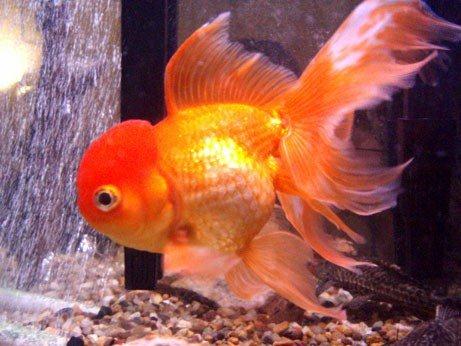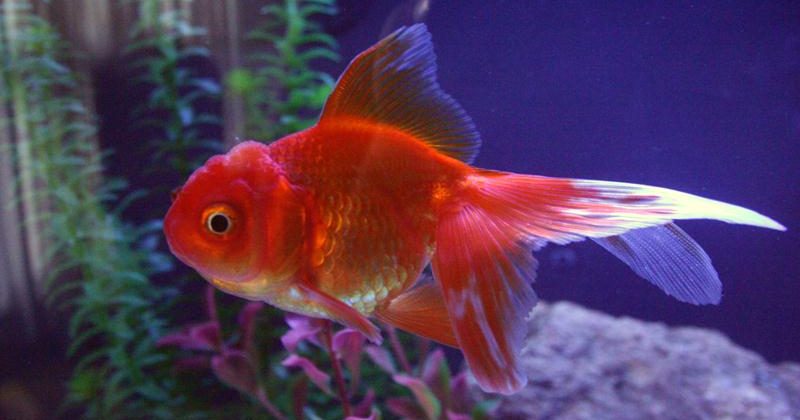The Oranda Goldfish has a few variations to the name, mainly due to their colour characteristics.
| Common name: | The Oranda Goldfish has a few variations to the name, mainly due to their colour characteristics. Some name variations are: Redcap Oranda, Blue Scaled Oranda, Calico Oranda, Black Oranda or Orange Oranda. |
| Scientific name: | Carassius Auratus |
| Care Difficulty: | Easy. As long as the water quality and temperature is good, you should not have many problems. Read the full page for more info. |
| Adult Size: | Varies from 6 to 10 inches (15cm to 25cm) |
| Original Origin: | China |
| Tank Size/Setup: | Recommend at least 30 gallons or 110 litres. This size should be increased if you have lots of fish. The goldfish species are quite oxygen hungry and a large volume of water with good surface area will ensure they don’t run short. If your fish are constantly at the surface gulping for air, it is a sign of an oxygen shortage which needs to be remedied. They will hang around in all areas of your aquarium and a fine substrate with some smooth rock features will suit them well. I would also suggest some strong vegetation to keep them happy, but be careful; they may destroy some of the weaker plants if they are not rooted in well. |
| Temperament / Compatibility: | Oranda Goldfish are peaceful slow swimmers. They go well in an aquarium with other goldfish and none aggressive slow swimmers. You may also wish to place an algae eater or two in the tank with them i.e. Plecos |
| Water Temperature: | 18°C to 22°C (65°F to 75°F) |
| Water Hardness: | 80 to 200ppm (5 to 18°dgH/kH) |
| Water pH: | 6.5pH to 7.5pH |
| Fish Food: | Goldfish are omnivorous and so will eat just about anything you give them, including some finely chopped vegetation. As with any fish, a variation in the diet will help keep them fit and strong. Being as popular as they are, there are many foods available which have been designed purely for goldfish. These foods will cover all their nutritional needs. |
| The Sexes: | Telling the sexes out of mating season is very difficult and almost impossible when goldfish are young. The male though is generally a little smaller than the female and slimmer if viewed from the top. During mating periods however, the male gets white spots on its head and gill covers. These spots are called breeding tubercles and care should be taken not to confuse them with other diseases like Ich. |
| Breeding: | Breeding Oranda Goldfish is quite straight forward in the right conditions. They are egg layers and can lay up to a thousand eggs during spawning. Good water quality is essential as with breeding most fish. It is also said that having a period of low temperatures followed by gradually raising the temperature may help inducing spawning. Once the eggs are laid, the parents should be removed from the tank to prevent them from eating the eggs. After 5 or 6 days you should see the fry start hatching at which point you should feed them fine live food or a food designed for fry. |
| Average Lifespan: | Anywhere from 10 to 25 years |
| Comments: | Taking care of goldfish is often under stated. The truth is that these fish are messy and oxygen hungry and you need to take this into account. Ensure that your aquarium have sufficient surface area or an additional aerator to counteract their need for oxygen. As for the waste they produce, water changes should be frequent to prevent Nitrate build-up. A test kit will come in handy to monitor the toxin levels in your aquarium. The Oranda Goldfish itself is characterised by the crop on its head called a wen. You can see this from the pictures. The fish doesn’t hatch with the wen. It grows over time, taking about 2 years to develop. A good balanced diet during this growing period will ensure that the wen grows to a good size. |




Leave a Reply